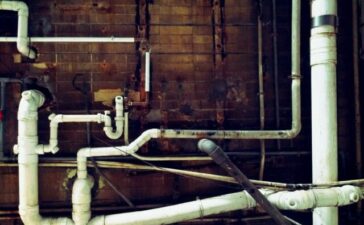The last thing a homeowner wishes for is a home full of mold. The spread of this fungus is challenging to stop, as spore cultures gradually transform into mold colonies, which induce serious health problems in individuals intolerant to pathogenic mycotoxins.
The best way to prevent the spread of this fungal species is by identifying the causes for its formation. Such household troubles usually originate from uncontrolled condensation, water leaks, and excessive humidity. Fortunately, there are skilled mold removal experts who take care of these problems in no time.
Have a look at the top six causes of mold in North Salt Lake homes.
A leaky foundation
A common cause of mold in North Salt Lake households is a leaky foundation. The foundation walls should be monitored regularly to prevent potential threats to their condition. Leaky foundations might not be detected for longer periods, as you can only notice some increase in your water bills.
Moist soil enables moisture to find its path to the concrete surface and trigger the growth of mold. Wet surfaces are ideal for the growth and spread of toxic fungi, affecting the health of families. Although minor foundation repairs can be carried out by homeowners, the condition of the foundation should be monitored on a regular basis to make sure it doesn’t worsen. Click here to learn how to prevent basement leaks.
Roof leaks
Another frequent cause of mildew in North Salt Lake households is leaking roofs. A leaking roof undoubtedly makes the growth process easier for this fungus. When water enters your house through the roof and stagnates, spores commence a process of germination on the wet surface, as mildew requires just two ingredients for growth, a certain amount of organic matter and moisture.
Homeowners in North Salt Lake cope with two types of fungus growth resulting from a leaky roof, systematic and limited. When coping with the former, roof leaks induce a buildup of moisture that leads to mildew spreading through the entire area. The latter occurs in areas with enough ventilation, which eliminates the moisture caused by leaky roofs.
Leaky water pipes
Another reason why North Salk Lake homeowners struggle with household mold is due to the appearance of leaky pipes. Leaking pipes are real trouble-makers in households, as they lead to different kinds of property damage. Whenever homeowners notice signs of a pipe leak, they’ll soon notice signs of fungus growth as well.
In such scenarios, the priority of homeowners should be locating the water pipe leakage source to fix the water intrusion issue. Once the pipe is fixed, you should hire experienced mold removal specialists to get rid of the signs of damage caused by the fungus. The majority of mold removal experts, like Abra Mold Removal, comply with all local disposal and environmental regulations. The sooner you fix your leaky pipe issue, the smaller the extent of deterioration.
Damp basements
A damp basement is another common cause of moisture issues. Since basements are situated below ground level, it’s no wonder these rooms are more prone to moisture. Air circulation in basements is poor, accompanied by incredibly high humidity. The combination of dampness and high humidity leads to mold formation.
In most cases, basements are linked to the other parts of a building, meaning leaks from the above floors might accumulate in the basement. In order to solve your moisture basement issue, hire a professional to locate the water source, as it’s essential to figure out how water managed to enter the basement.
A lack of sunlight
Another factor that contributes to the formation of mold in North Salt Lake households is the lack of sunlight. Direct sunlight exposure is fatal to this fungal species, as the ultraviolet rays in natural sunlight are destructive to its cellular structure. Nevertheless, indoor lighting isn’t as harmful to mold as natural light is.
The spectrum of artificial light is much different than sunlight, as it fails to emit the same type of photons, which destroy mold and prevent it from developing further. Although this fungal specie prefers total darkness or a limited amount of light, it still thrives inside homes where fluorescent and incandescent lights are burning. The following link, https://en.wikipedia.org/wiki/Incandescent_light_bulb, explains the history of incandescent light bulbs.
While it’s impossible for your entire house to be exposed to sunlight, you can invest in special types of indoor lighting that imitate the wavelengths of the sun and have a destructive effect on mold. Nevertheless, this fungus is still capable of finding some wet and warm conditions inside the house. Also, the room temperature in most homes works in favor of this species.
Mold isn’t very tolerant when it comes to temperature conditions that are either too hot or too cold. Freezing temperatures either destroy it or turn it into a dormant species, whereas boiling temperatures destroy the cellular structure of the fungus and prevent it from spreading. Household temperature levels between 72 and 81˚F are perfect for mold to thrive. As far as humidity is concerned, homeowners in North Salt Lake are recommended to keep their humidity levels from 30- 50 percent.
Attic moisture
Attic moisture is another frequent cause of such household problems, as attics are usually poorly ventilated and humid. The largest part of homeowners use their attics as storage spaces and only go there in the event of an emergency, such as a water leak. Homeowners can easily identify running water in attics, as it’s likely to pour down through light fixtures or hatch openings.
There are numerous attic moisture sources, such as missing or leaky roof shingles, a leaking drain, leaking ventilation pipes, plumbing pipe condensation, leaky gutters, condensation in the course of cold months, etc. Other sources involve improperly installed flashings, exhaust vents, and ridge capping, faulty insulation, AC units in the attic, damp stored materials, and furnaces in the attic.
To sum up
Hire a specialist to determine the cause and solve the issue on your behalf!





